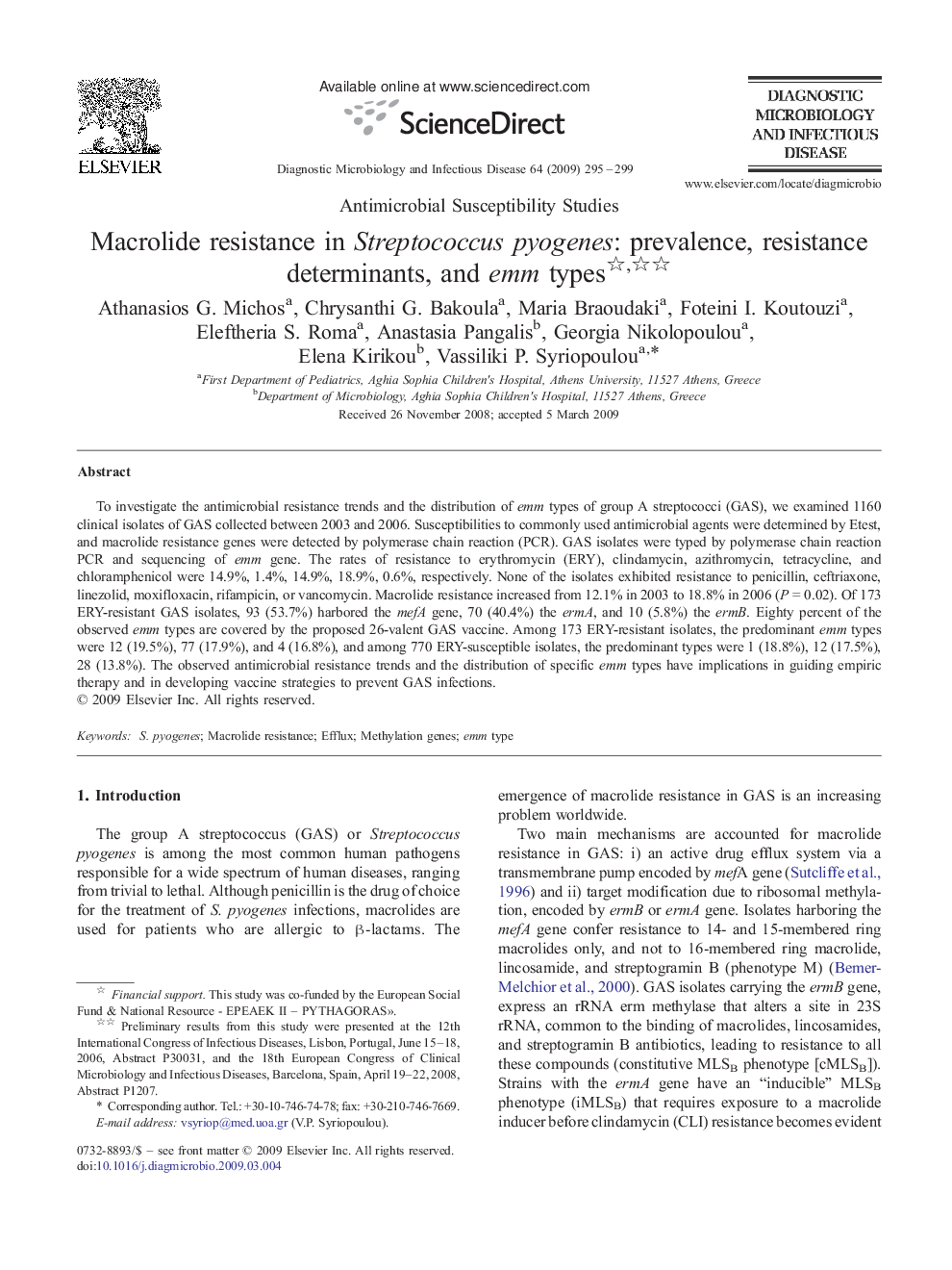| Article ID | Journal | Published Year | Pages | File Type |
|---|---|---|---|---|
| 3347896 | Diagnostic Microbiology and Infectious Disease | 2009 | 5 Pages |
To investigate the antimicrobial resistance trends and the distribution of emm types of group A streptococci (GAS), we examined 1160 clinical isolates of GAS collected between 2003 and 2006. Susceptibilities to commonly used antimicrobial agents were determined by Etest, and macrolide resistance genes were detected by polymerase chain reaction (PCR). GAS isolates were typed by polymerase chain reaction PCR and sequencing of emm gene. The rates of resistance to erythromycin (ERY), clindamycin, azithromycin, tetracycline, and chloramphenicol were 14.9%, 1.4%, 14.9%, 18.9%, 0.6%, respectively. None of the isolates exhibited resistance to penicillin, ceftriaxone, linezolid, moxifloxacin, rifampicin, or vancomycin.Macrolide resistance increased from 12.1% in 2003 to 18.8% in 2006 (P = 0.02). Of 173 ERY-resistant GAS isolates, 93 (53.7%) harbored the mefA gene, 70 (40.4%) the ermA, and 10 (5.8%) the ermB. Eighty percent of the observed emm types are covered by the proposed 26-valent GAS vaccine. Among 173 ERY-resistant isolates, the predominant emm types were 12 (19.5%), 77 (17.9%), and 4 (16.8%), and among 770 ERY-susceptible isolates, the predominant types were 1 (18.8%), 12 (17.5%), 28 (13.8%). The observed antimicrobial resistance trends and the distribution of specific emm types have implications in guiding empiric therapy and in developing vaccine strategies to prevent GAS infections.
